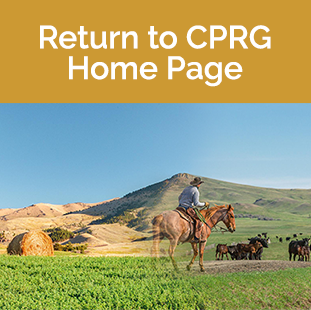Ranchland Stewardship Program
The Ranchland Steward Program is a grazing-based effort to improve soil health and resiliency through sustainable grazing practices. By practicing regenerative grazing, ranchers can reduce input costs and improve profitability.
Regenerative grazing focuses on shorter grazing periods, higher stock density, smaller pasture sizes and longer recovery periods. Shorter grazing bouts and higher stock density reduces grazing selectivity and reduces competition among plants and distributes manure more uniformly. This also allows for shorter grazing on pastures, which stimulates growth and prevents grazing of regrowth. Smaller pasture sizes create more dense animal distribution which allows for trampling of organic material into the soil. A big focus is the recovery periods of the pastures. Breaking pastures up into smaller sizes allows for longer recovery of plants which builds up plant litter. Incorporating these practices with adaptive management through monitoring of lands can create resiliency among ranches.
The Ranchland Stewardship Program aims to distribute $6.5 million in grants over 4 years. These grants are intended to help provide infrastructure for cross fencing, stock water development, implementation of rotation grazing systems, and education on range monitoring and adaptive management.
A few goals include signing up 25,000 acres per year for 5 years, to implement regenerative practices; education sessions for ranches; and sequestering 0.5 metric tons of CO2 per acre.
Opportunities for grants are forthcoming.

